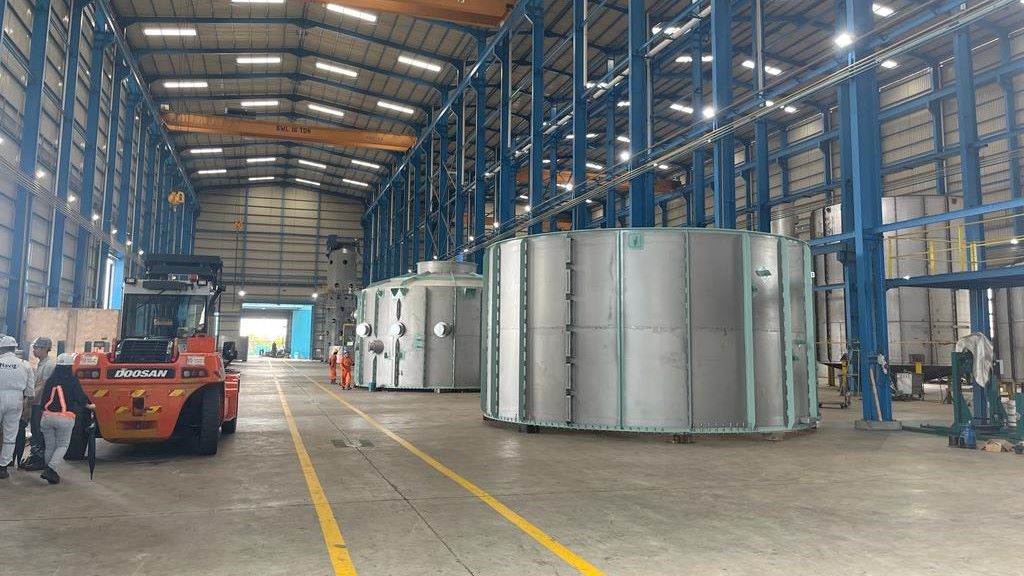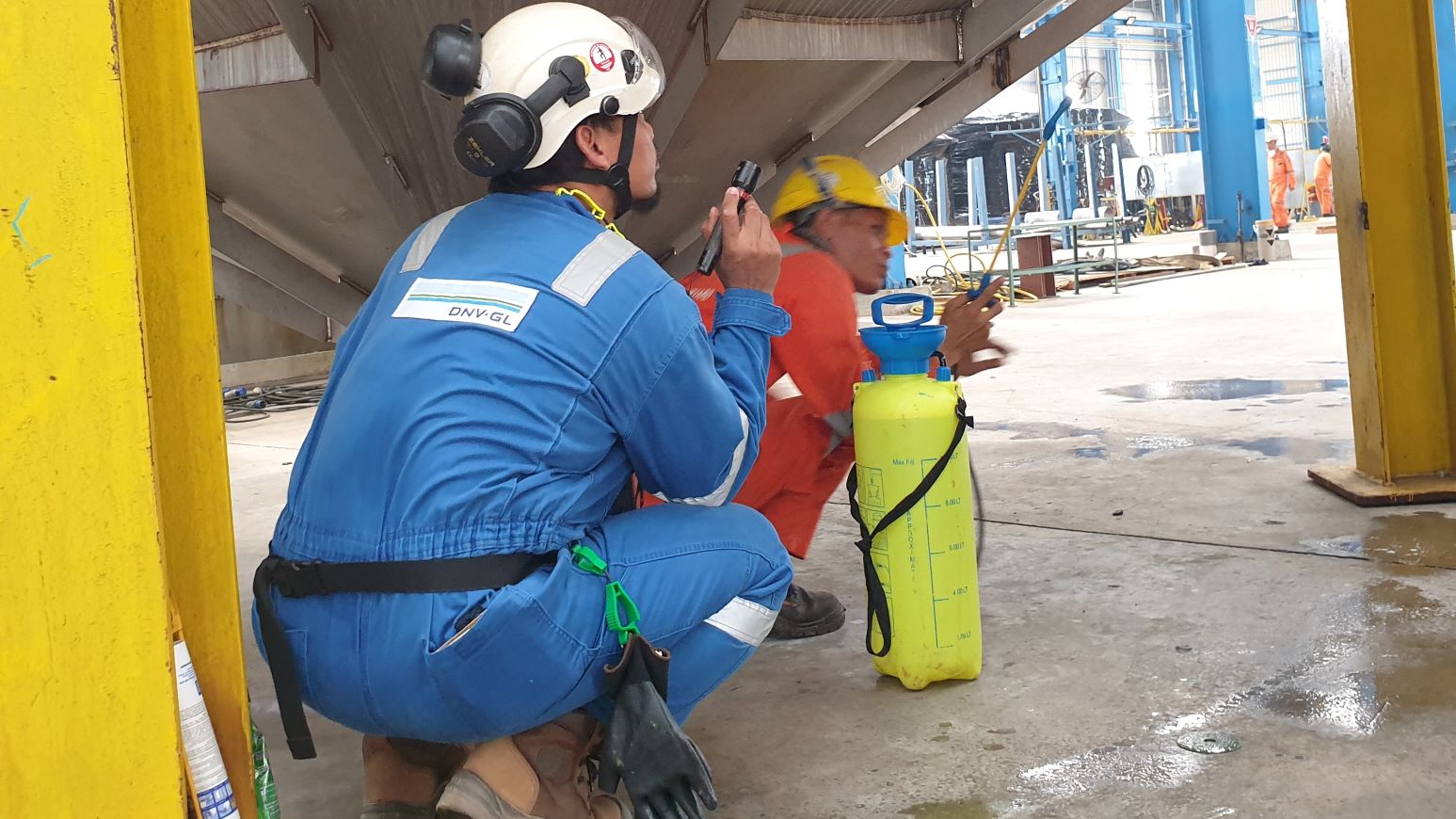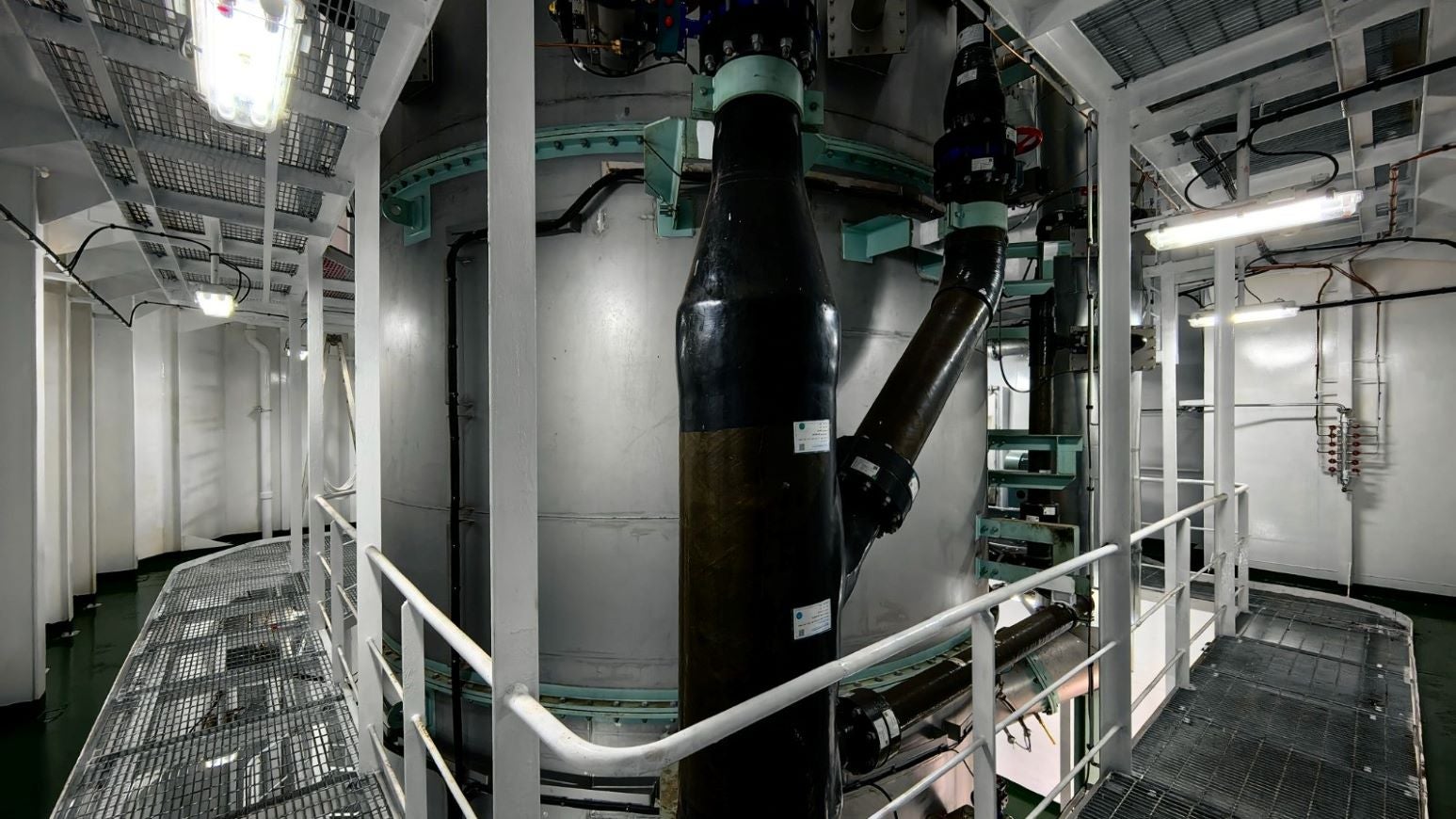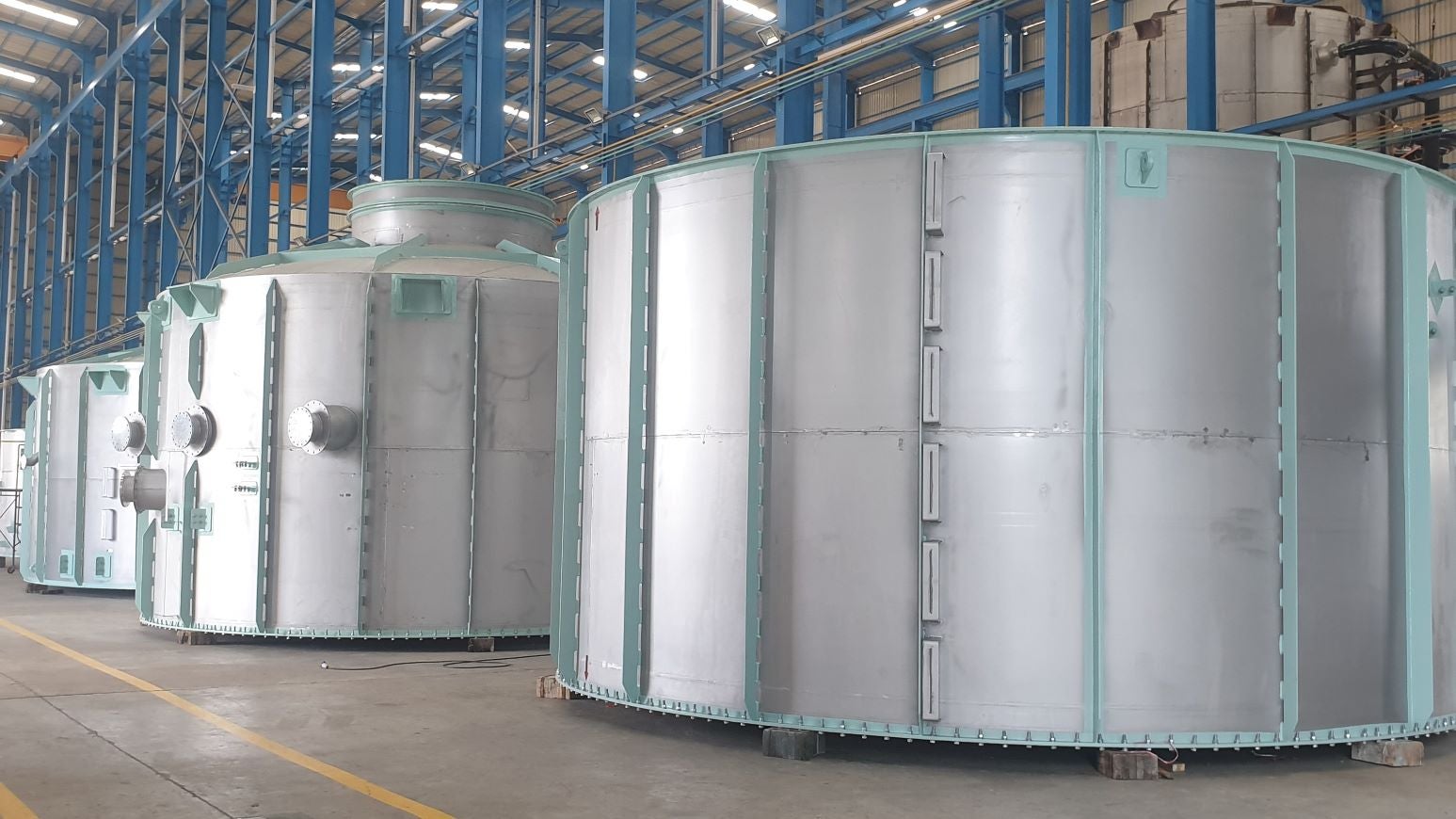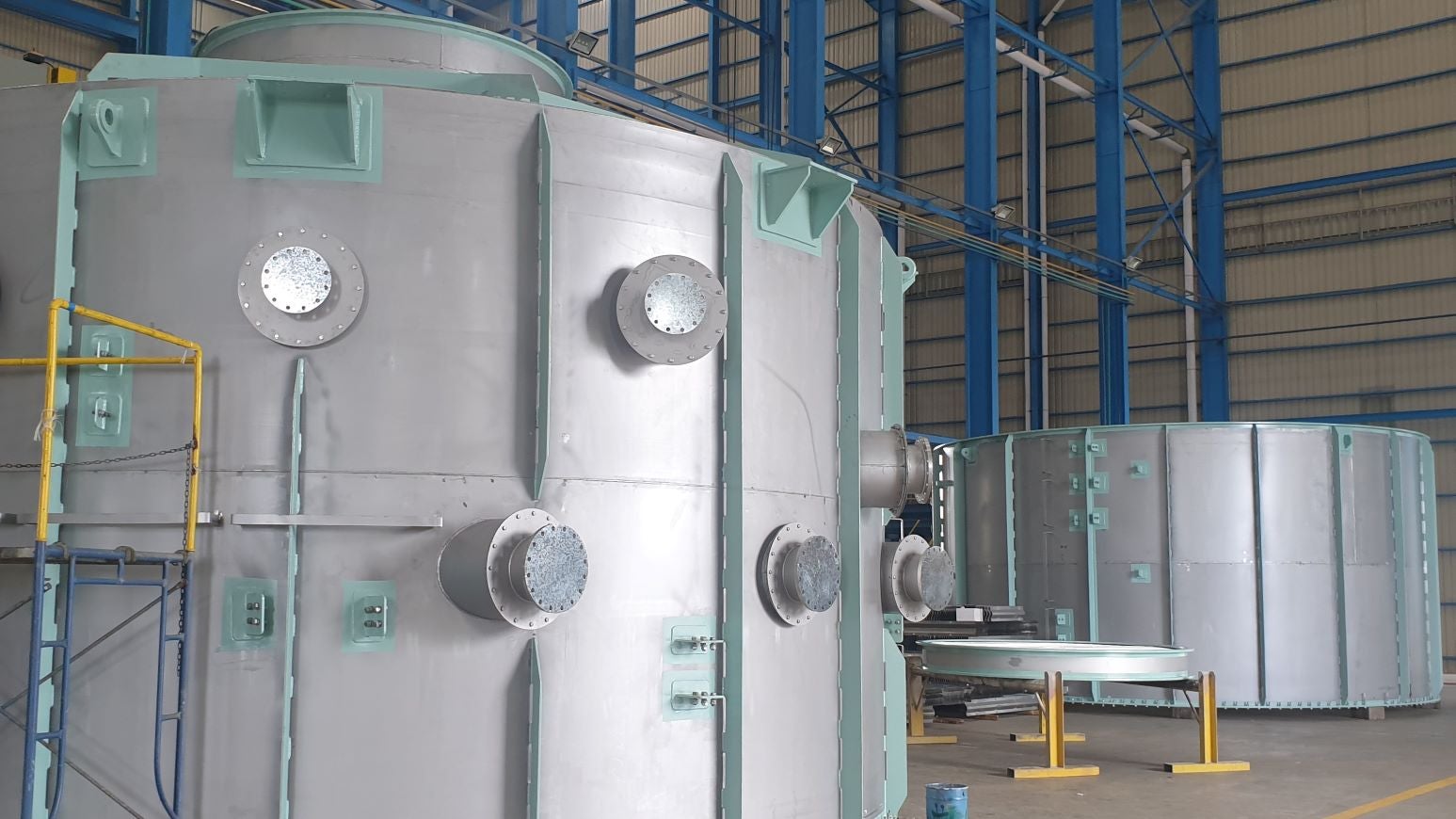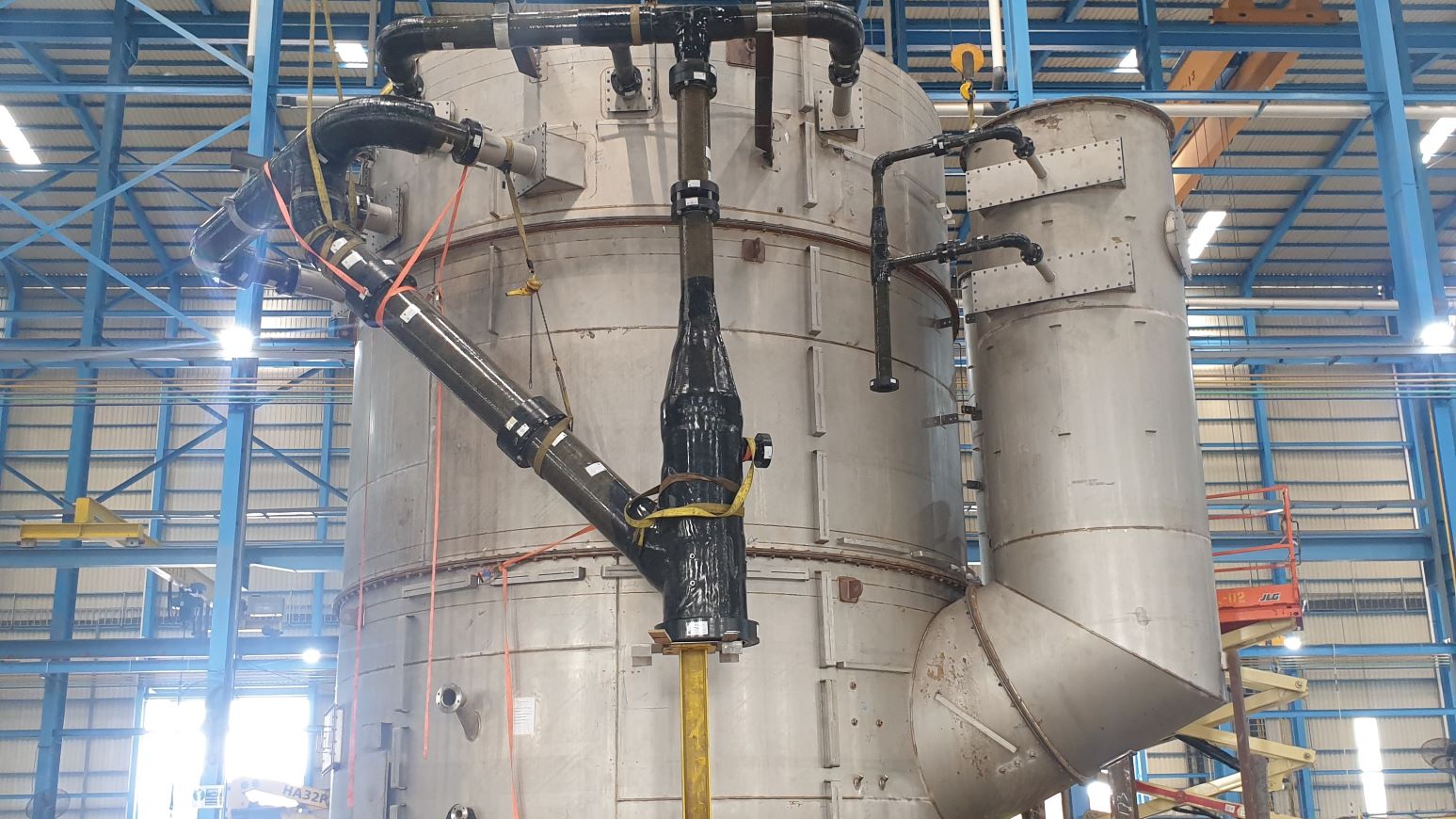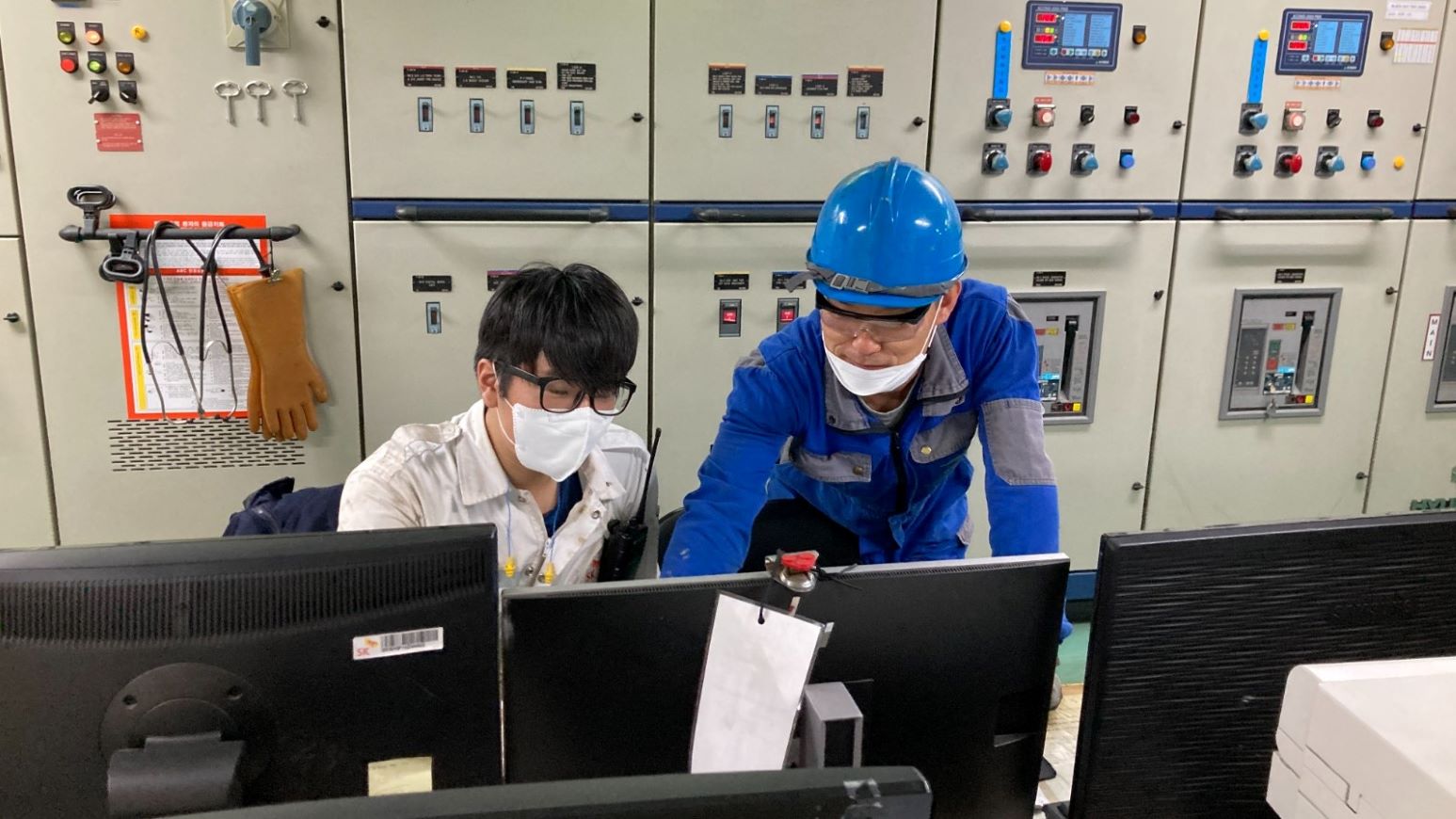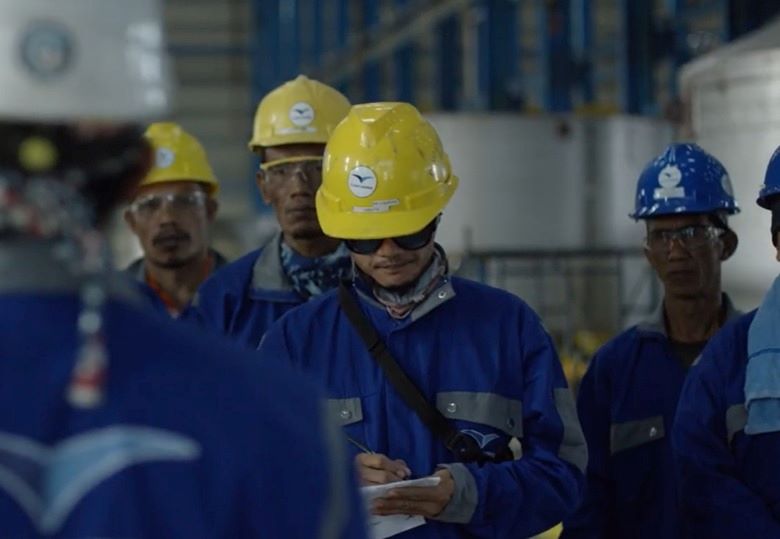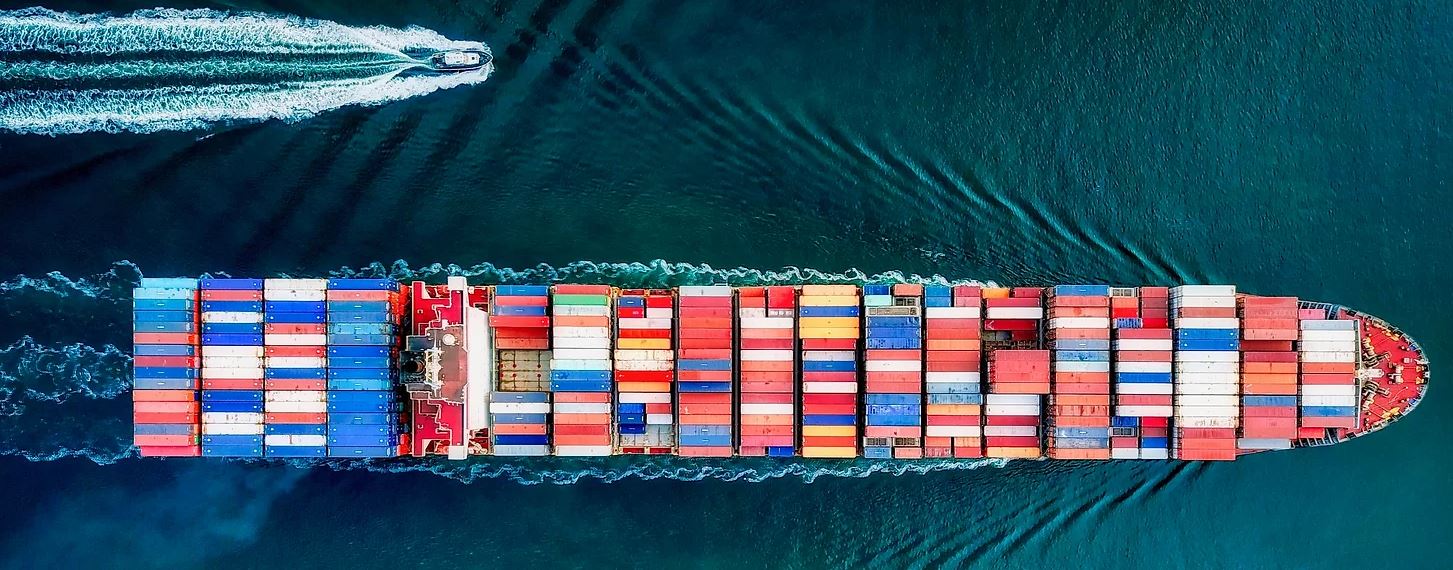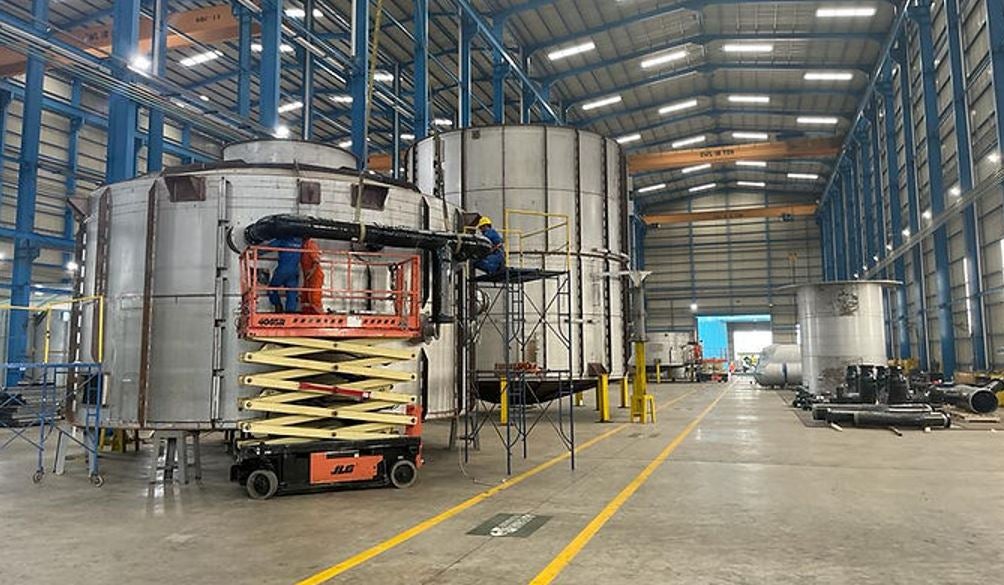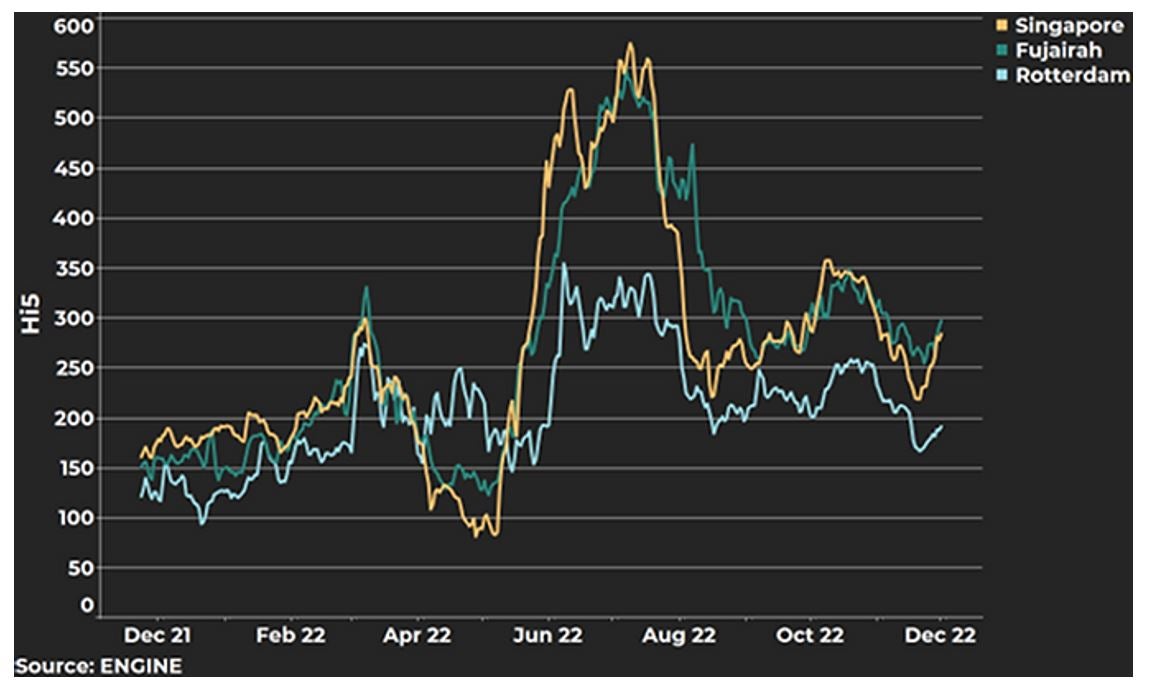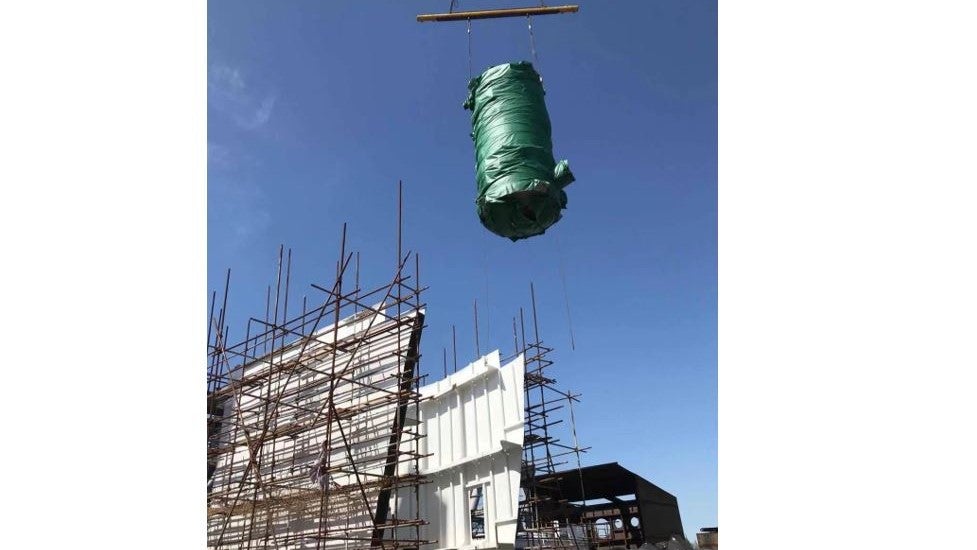
For almost two decades, Clean Marine has been a trusted partner to clients across shipping sectors, including tankers, bulk, container, and gas carriers. The company designs, manufactures, and supplies high-quality exhaust gas cleaning systems (EGCS), also known as scrubbers, as well as newer developments in marine technologies, such as air lubrication systems (ALS) and CO₂ monitoring solutions.
Ship exhaust scrubbers
Ship exhaust scrubbers are systems designed to reduce harmful emissions from ships’ engines, specifically by removing sulphur oxides (SOx) and particulate matter from the exhaust stream.
- Exhaust gas from the ship’s engine is directed into the scrubber unit at the rear of the main funnel.
- Inside the scrubber, the exhaust gas is mixed with a stream of seawater, which acts as a cleaning agent. This process is called ‘scrubbing’.
- The seawater contains alkaline substances, mainly natural salts, that react with sulphur oxides in the exhaust gas, forming harmless compounds like sulphate salts.
- The scrubbing process also captures and removes particulate matter from the exhaust gas, as well as low levels of CO.
- The cleaned exhaust gas is released through the ship’s funnel while the used seawater, now containing the neutralised sulphur compounds and particulate matter, is treated in line with environmental regulations and discharged back into the sea.
Carbon capture ready scrubbers
Clean Marine’s straightforward U-type (open loop) design and superior steel quality ensure maximum durability, as demonstrated by the company’s multi-year track record of seamless operation across fleets. The open loop system eliminates the need for onboard storage of caustic acid or wastewater for discharge in ports. With minimal training required, the operational burden on crew members is significantly reduced. This design is also proven to be the most cost-competitive, both per unit and for ongoing operational expenses. According to DNV Class Society (2022), over 80% of all scrubbers sold worldwide have been open loop systems for exactly these reasons.
Clean Marine has taken a proactive stance by ensuring that its scrubber units are designed to be carbon capture ready (CCR). This forward-looking approach is aimed at future-proofing emissions in line with the International Maritime Organization’s (IMO) targets to reduce carbon intensity in the shipping industry by at least 40% by 2030, with aspirations towards 70% in the future. The company’s CCR design allows its advanced carbon capture monitoring and capture systems to be integrated onto any vessel.
In addition, Clean Marine is collaborating with marine data reporting systems to offer a comprehensive package. Whether ship owners seek to optimise costs, minimise emissions, or validate their energy efficiency existing ship index (EEXI) and carbon intensity indication (CII) ratings, Clean Marine provides a holistic solution that caters to all requirements.
Using its CCR technology and partnerships, Clean Marine empowers ship owners to navigate the evolving regulatory landscape, reduce their environmental impact, and achieve sustainability goals. The company is committed to providing cutting-edge solutions to address challenges faced by the maritime industry.
Scrubber retrofitting or newbuild services for shipyards
Clean Marine collaborates with shipyards, providing retrofitting services for scrubber units or new build projects. The company has extensive experience working in China, Korea, Japan, and Singapore, as well as in the Middle East and the US. Clean Marine’s global technical footprint enables the company to offer services to any ship, anywhere in the world. For more information on specific shipyards or dry dock locations, please contact the company directly.
Aftersales servicing
With decades of seafaring and EGCS maintenance experience, Clean Marine’s specialist team provides round-the-clock support for scrubbing services to ensure optimal performance. Comprising chief and second engineers, electrical engineers, and automation engineers, all team members are equipped with in-depth knowledge of scrubber hardware and technology. The team also includes welders and fitters with expertise in steel scrubber structures for structural repairs.
Strategically positioned team members guarantee swift mobilisation to minimise downtime, allowing ships to remain operational. Using state-of-the-art technology, engineers can access the scrubber control system to monitor system health, review logs, and diagnose faults before they arise. Clean Marine also offers a bespoke package that provides cost-effective solutions and peace of mind, ensuring that support is always available, day or night.
With over 300 of Clean Marine’s manufactured units currently on the water, and dozens of third party scrubbers under the company’s maintenance services, Clean Marine is a centre of excellence for scrubber services, regardless of the original manufacturer.
Scrubbers in emission control areas
From 1 May 2025, a Mediterranean Emission Control Area (ECA) will be implemented, with the purpose of reducing sulphur oxide (SOx) emissions and improving air quality in this heavily trafficked area. This follows on from existing ECA’s in Northern Europe, the US, and certain global river systems.
To comply with new regulations, ships must switch from using very low sulphur fuel oil (VLSFO) to marine gasoil (MGO), or other complaint fuel, with a maximum sulphur content of 0.1%. This means that ship owners operating in or transiting through the region will face additional operational costs, making it harder to maintain profitability. The shipping industry has already faced increased costs since the implementation of IMO2020 and rising crude prices, with fuel expenses representing approximately 30% of overall operating costs.
Scrubber technology is currently the only proven and commercially available solution to meet these requirements, without increasing operational expenditure. Installing EGCS or scrubbers could significantly reduce emissions and improve air quality while allowing ships to burn cheaper high-sulphur fuel oil (HSFO) and remain compliant with regulations.
Scrubber technology has been used for many years to reduce SOx emissions from 3.5% to below 0.5% globally, with some manufacturers achieving levels below 0.1%, such as Clean Marine. The company has achieved this limit consistently in real-world sea trials and nearly all of the installed fleet is future proofed against global ECA expansions.
For more information on this topic, please see the Clean Marine white papers.
Air lubrication systems
More commonly referred to as simply ALS, air lubrication systems are surging in popularity as owners look for cost positive solutions to meet ever tightening environmental regulations. These systems inject a blanket of air bubbles beneath a vessel’s hull, significantly reducing hydrodynamic drag and thus also reducing fuel consumption and emissions, heralding a new era in eco-efficient maritime operations for those at the forefront of these technological upgrades.
Clean Marine will conduct advanced ALS sea trials across four MR tankers, retrofitted at New Times Shipyard, in the fourth quarter of 2023. Leveraging a low cost manufacturing hub and economies of scale, accomplished with partner owners, Clean Marine can offer ALS for new builds and retrofits at a fraction of the cost currently seen from market competitors.
About Clean Marine
In January 2020, Clean Marine A/S and FMS Singapore, two globally recognized EGCS companies, merged to form Clean Marine Singapore. Headquartered in Singapore, the company offers comprehensive business solutions, encompassing product design, engineering, manufacturing, and after-sales services.
As the original equipment manufacturer, Clean Marine maintains complete control over the entire manufacturing process, from quoting to installation. The company’s state-of-the-art 40,000m2 facility is situated in the Batam Island Free Trade Zone, Indonesia, which is a 45-minute ferry ride from Singapore. The factory is accessed via the Batu Ampar Port in Batam, or the Port of Singapore at Keppel, Tuas. The Batam facility is designed for scalability, with a maximum capacity of up to 12 scrubber units per month.
With over 300 active scrubber units in operation globally, Clean Marine’s regional support teams possess unparalleled expertise in ongoing maintenance and after-sales assistance. Besides maintaining exceptional service standards, the company also leverages economies of scale and extensive manufacturing knowledge to provide short production lead times and competitive pricing for clients.


